Table of Contents

Picture driving down the highway, hair blowing in the wind, and your favorite jams pumping through the speakers when suddenly, your car comes to a stop. What’s wrong?
The battery terminals are dirty. Don’t panic! With baking soda and a few simple steps, you can clean those terminals and get your car running again.
This guide will show you how to clean battery terminals with baking soda in four easy steps. Let’s make those battery terminals shine!
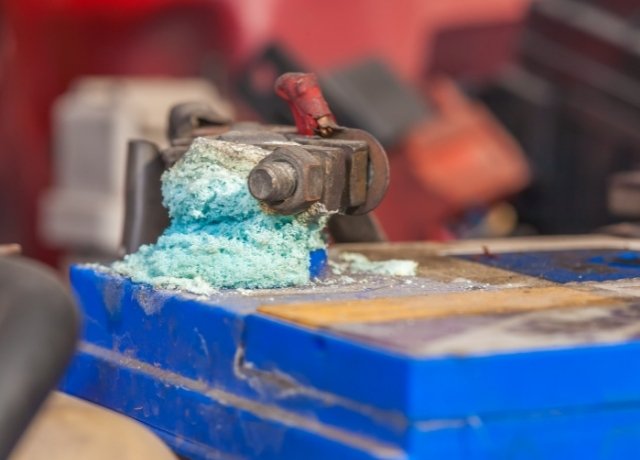
Understanding Battery Corrosion
Battery corrosion is characterized by a fuzzy substance found around battery terminals and cable ends; this common issue can affect electrical connections, leading to reduced efficiency or lifespan of batteries, often requiring reconditioning.
Types of Corrosion:
Greenish Corrosion:
A wet lead electrode reacting with copper on the terminal clamp causes greenish components around the terminals.
White Corrosion:
If white parts are visible around aluminum clamps they may be made from that material.
Sulfation:
When improper charging occurs inside batteries crystals form due to sulfation, another corrosive action that occurs within them. These crystals can multiply causing leaks or expansion cells which shorten lifespan even more.

What Causes Battery Corrosion?
Devices powered by batteries frequently suffer from corrosion at their connectors resulting in failures as they build up over time on these contacts leading to several factors including but not limited to:
Undercharging:
Corrosion could be a problem when your battery is not charging optimally. Charging can be blocked and problems created by dirt, grime, or acid on the terminals of a battery. By using a battery terminal cleaner regularly you can keep the terminals in good condition and help them charge properly.
Overcharging:
When you overcharge a battery, it breaks down the electrolyte which is created from sulfuric acid and water. This decomposition creates hydrogen gas that can escape if the battery isn’t properly sealed.
If the battery is left open to exposure, it leads to corrosion at terminals. Watching how much charge your device gets may help prevent this issue.
An Overfull Battery:
The fluid inside a battery separates its chemicals. When you fill too much into a car battery, liquid spills out leading to metal terminals corroding.
Mishandling of electrolytes can result in worse situations than just cleaning up with eco-friendly cleaners for acid build-up.
Reaction to Copper Clamps:
Corrosion can also be caused by copper clamps connecting cables to batteries. Excessive flow of current produces copper sulfate which eats away at poles. A proper connection either loose or tight enough should stop this from happening.
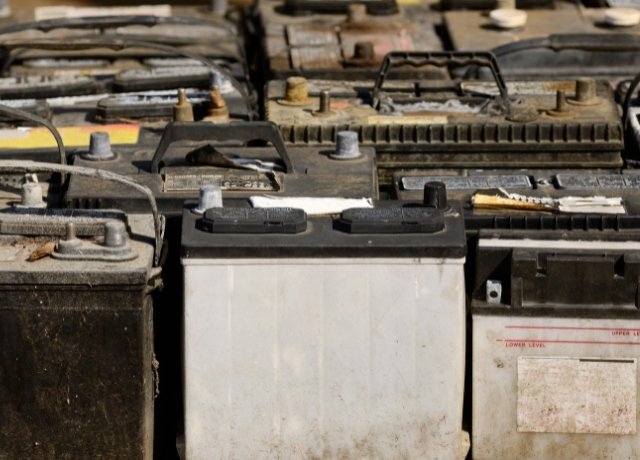
Battery Age:
Car batteries typically last between 4 to 5 years. After that, the chemicals inside can break down and cause corrosion. The battery is more likely to corrode if it’s older.
If this happens, you should recondition battery with baking soda or replace it.
Electrolyte Leakage:
Electrolytic leakage resulting from careless maintenance causes terminal corrosion which could easily be avoided by frequent inspections coupled with good care practices aimed at extending lifespan hence saving money spent on buying new ones every few months instead of weeks days hours minutes seconds milliseconds etcetera!
Let us now learn how we can clean corroded battery terminals using baking soda! Let’s begin!
How to Clean Battery Terminals With Baking Soda:
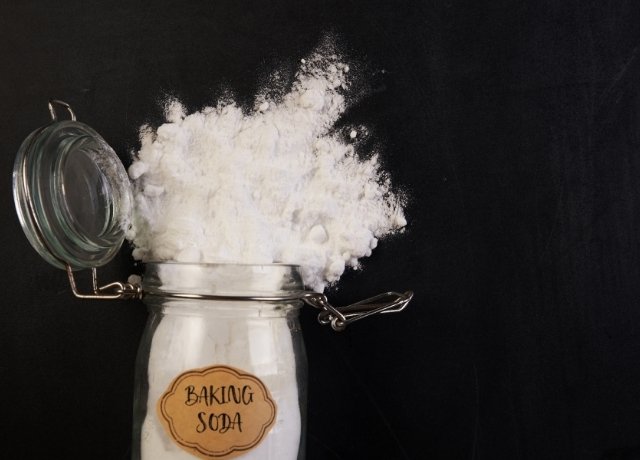
Cleaning the car battery with baking soda is a powerful and eco-friendly method for acid build-up removal. Before you begin, you will need to gather the following items.
What To Gather:
Protective gloves like dish gloves to protect your hands
Baking soda
Water
Soft-bristled brush or wire brush
Petroleum jelly to lubricate
Cloth to dry
Step 1: Remove Terminal Connector Wires:
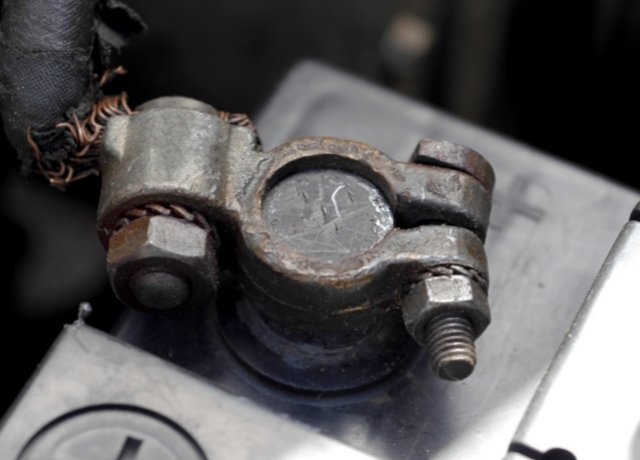
To disconnect the car battery first open the hood and grab a wrench. The battery is usually located on the right side of the car. Make sure that your car is off.
First, remove the negative terminal and then the positive one because if you take off the positive terminal first it can cause a shock as the current is still connected.
Look for cracks in the battery and replace them if needed Check wires and clamps for damages replace any worn-out ones.
Step 2: Make the Cleaning Paste:
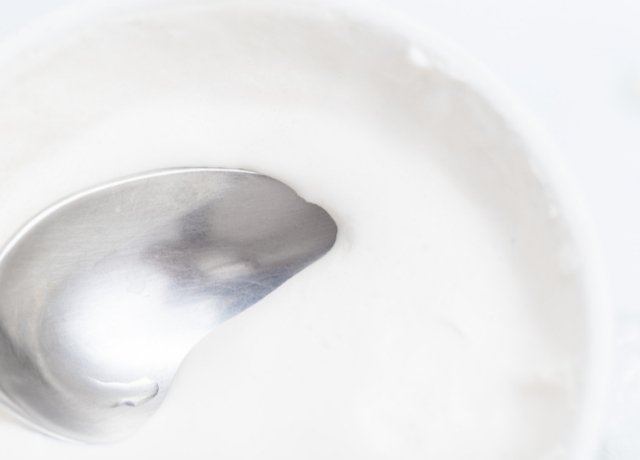
Mix three tablespoons of baking soda with one tablespoon of hot water into a small bowl this should make a paste. This helps in acid build-up removal from batteries making cleaning easier.
Step 3: Clean the Terminals:
Scrub the battery connector wire heads with a soft brush and cleaning paste. The ‘O’ ring is usually the most corroded so pay attention to that area. Before reconnecting clean the wires thoroughly.
Use only a thin layer of paste so it doesn’t wet the battery pack. After using the paste take a damp towel and wipe down the battery wires and connection pegs to get rid of any remaining residue.
If there is still corrosion clean it again. Wait for them to dry before reconnecting power.
Step 4: Lubricate And Reconnect Terminals:
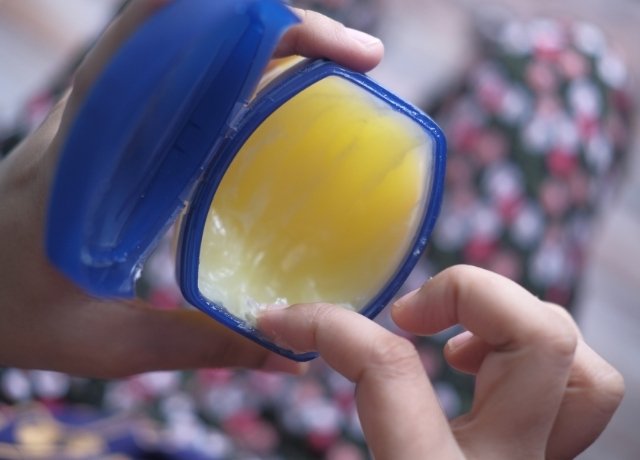
After everything dries apply some petroleum jelly onto connecting pegs for future terminal corrosion protection. Be sure both sides are attached tightly plus any excess wiped away
Awesome! You’ve successfully used baking soda on your terminals now they’re reconditioned and ready to work great again!
Important Tips for Car Battery Maintenance:
To ensure your car battery lasts longer, follow these essential maintenance tips:
- Clean the battery terminals regularly to prevent acid build-up and rust elimination. Use a mixture of baking soda and water as an eco-friendly cleaning solution for effective battery terminal cleaning.
- Apply the cleaning paste properly. Ensure it’s thick enough to adhere well. If needed, add more baking soda to achieve the desired consistency.
- Allow the paste to sit for a few minutes, especially when dealing with stubborn corrosion.
- Inspect the battery frequently for signs of terminal corrosion. Regular monitoring can help preserve the battery and extend its life.
- Be cautious when working under the hood. Perform any maintenance tasks before driving the car to avoid burns from hot components.
These battery reconditioning steps help you restore battery with baking soda, ensuring it remains in optimal condition for up to five years, depending on your driving habits and environmental conditions.
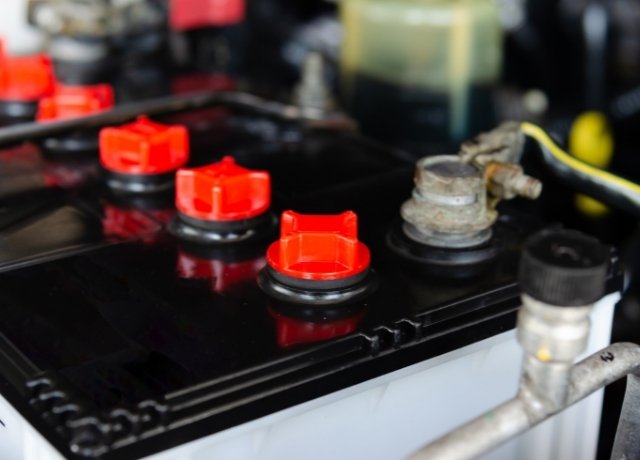
Additional Tips for Battery Maintenance:
Preventative Measures:
To prevent corrosion on your battery terminals, apply a thin layer of petroleum jelly after cleaning. Moisture and acid are the main causes of corrosion.
At least once a year you should check and clean your battery terminals, but more often if you live in humid conditions or drive in severe weather.
When to Call a Mechanic:
If your vehicle has starting issues, a bulging battery case, or leaking fluid these may be signs of trouble so know when it’s time to take it into the shop.
For anything else though just schedule an appointment with one of our qualified technicians who can help diagnose what is wrong so that you can have peace of mind knowing that everything is running smoothly again!
Frequently Asked Questions | Car Battery Preservation:
Q: Is it okay to use baking soda to clean battery terminals?
Ans: Yes, baking soda is a safe and effective method to clean battery terminals.
Baking soda neutralizes the acidic corrosion that can build up on battery terminals, ensuring better conductivity and prolonging the life of your battery.
Q: What happens if you put distilled vinegar in a battery instead of distilled water?
Ans: Don’t put distilled vinegar inside cars as they will break down parts leading to them not working properly or failing altogether.
Always follow manufacturer recommendations using only approved fluids like deionized water (distilled).
Q: Can I use purified water instead of distilled in my battery?
Ans: It’s best to stick with distilled water for your battery. Purified water may still contain minerals that can lead to corrosion and reduce the lifespan of your battery.
Distilled water is free of these impurities, making it the safest option.
Q: Do batteries need distilled water?
Ans: Yes, batteries need distilled water to function optimally. Distilled water prevents mineral build-up and corrosion within the battery, ensuring it operates efficiently and lasts longer.
Using tap or purified water can introduce contaminants that degrade battery performance.
Q: What happens if you put too much distilled water in a battery?
Ans: Overfilling a battery with distilled water can cause electrolyte overflow, leading to battery acid spillage. This can damage surrounding components and reduce the battery’s efficiency.
Always fill the battery to the recommended level, typically just above the plates inside.
Q: How much baking soda to water for battery cleaning?
Ans: Mix 3 tablespoons of baking soda with 1 cup of water to clean battery terminals. This ratio effectively neutralizes the acidic corrosion on battery terminals.
Q: Does battery acid react with baking soda?
Ans: Yes, battery acid reacts with baking soda. The chemical reaction between the acidic corrosion (sulfuric acid) and the alkaline nature of baking soda neutralizes the acid, making it easier to clean off the terminals.
Q: What is the best cleaner for battery corrosion?
Ans: Baking soda and water are some of the best and safest cleaners for battery corrosion. This mixture effectively neutralizes acid and helps remove corrosion deposits.
For severe cases, specialized battery terminal cleaners are available at automotive stores.
Q: Can you clean car battery terminals while connected?
Ans: It’s generally recommended to disconnect the battery terminals before cleaning. This ensures your safety and prevents any accidental shorts or shocks.
If you must clean while connected, ensure the car is turned off and use extreme caution to avoid any conductive contact between the terminals.
Conclusion:
It is simple and effective to use baking soda to recondition your battery. By cleaning the terminals, you can make sure that your car starts every time by preventing corrosion and greatly extending its life.
Quick Steps to Recondition Battery with Baking Soda:
- Gather Supplies: You’ll need baking soda, a soft-bristled brush, and lubricant.
- Disconnect the Battery: Ensure safety by properly disconnecting the battery.
- Clean the Terminals: Use the brush and baking soda to remove any corrosion.
- Lubricate and Reattach: Lubricate the terminals and reattach them securely after cleaning.
Give it a try and see the difference for yourself. Happy driving!

11 thoughts on “How To Clean Battery Terminals With Baking Soda- 4 Easy Steps Flawless Car Guide”